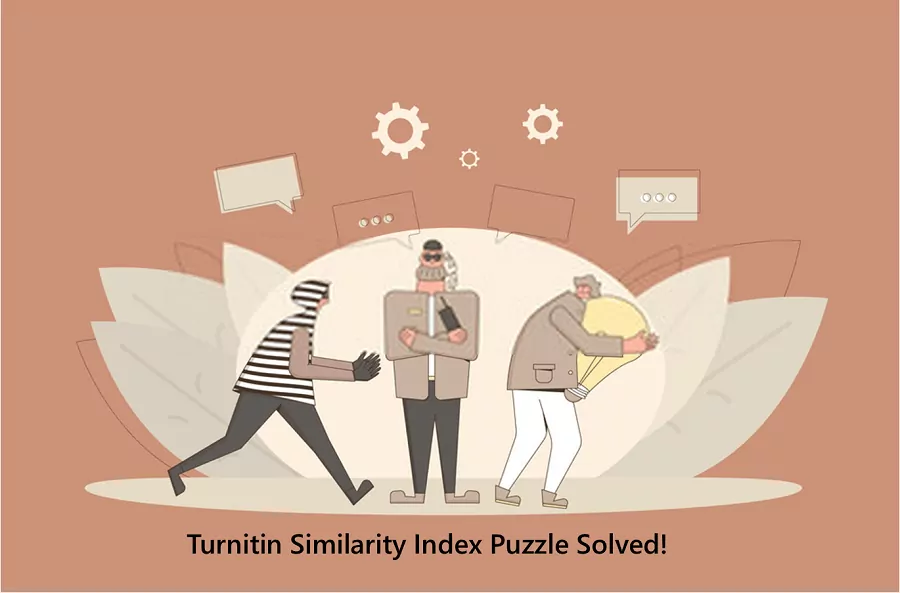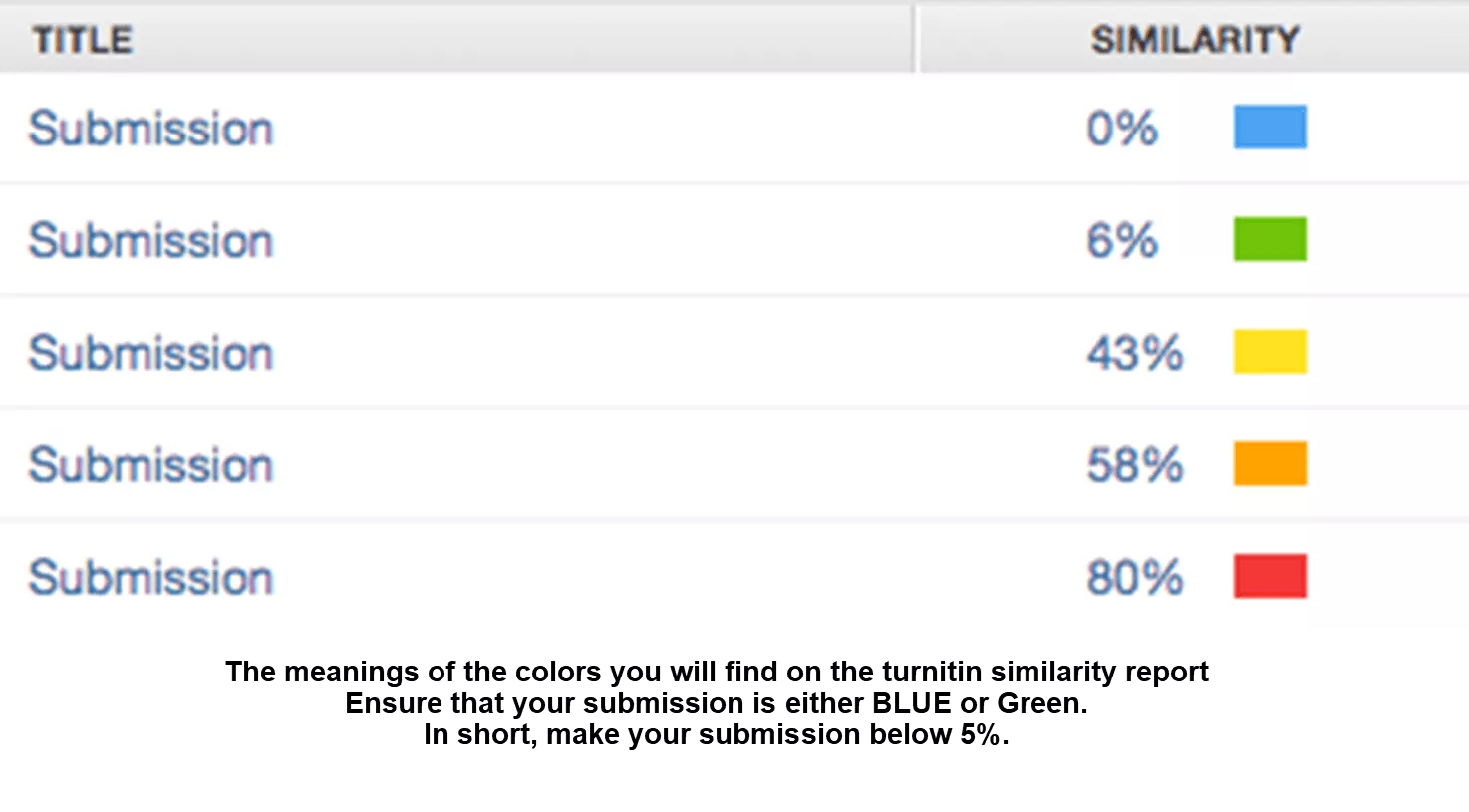
Did you know that Turnitin does not actually check for PLAGIARISM in your work? Instead, the software is designed to run your submissions against the documents in their repository/database. If there are matches or similarities to the contents in the sources or pages, Turnitin flags your paper.
Technically, the database comprises millions of web pages, including the archived and current websites on the internet. It also consists of student works submitted via Turnitin in the past and documents including journals, publications, PDFs, and periodicals.
When you use quotes that are properly referenced, certain instances when a match is inevitable are totally natural. You can filter this. If that is the case, though, your instructor will spot the reason and use it to investigate the acceptability of the match/similarity.
We take you through the steps of interpreting a Turnitin Report, the various remedies to a high similarity index, and everything about the acceptable limit.
You need to understand how to interpret the Turnitin originality report. Better yet, you must also be cautious about how Turnitin produces similarity scores.
Our academic writing experts will tell you that Turnitin is the best plagiarism checker online. Using our research writing service, you are guaranteed a paper that passes Turnitin and one that is relevant to your instructions. One reason is its robust use by institutions. The second reason is that it thoroughly checks the similarity index against the documents, web pages, and student submissions in its repository.
In this respect, Turnitin helps you reduce plagiarism. Undeniably, if you notice the level is too high, you will need to paraphrase the words and cite properly – it points you to the citation errors, paraphrasing mistakes, and incidences when you use words verbatim. However, as long as there are text overlaps between the repository and the papers you submit, you will have a high similarity index.
The color-coded Turnitin Similarity report has significance. The originality report indicates the extent to which your work is similar to those in the robust Turnitin Database.
Here are the colors used in Turnitin:

If you are using any plagiarism checker, let alone Turnitin, your target similarity score for a better grade should technically be below 5%. This shows that you have paraphrased and cited correctly. However, in the case of Turnitin, the acceptable percentage of similarity is below 25%. If you have a similarity of 1-25%, which is marked as green in the Turnitin percentage report, your paper is original. It is proof enough that you did not lift more than three words verbatim, and hence, your submission is original. It is also proof that your work is well-cited and referenced, as it should. The above 25% Turnitin similarity score percentage is too much and could be flagged as plagiarism. Our solid advice is to maintain a similarity of 5% for a perfect and top-grade paper.
If you submit work through Turnitin, you are allowed 24 hours or a day to resubmit the edited assignment. The rationale is to enable you to resubmit your written papers to generate a new similarity report. The rationale is to prevent matching your previous draft.
You should contact your instructors or review the submission requirements on the acceptable Turnitin similarity index. Note that every institution, instructor, and assignment has different matching text and, thus, an acceptable similarity index.
Bottom line: A similarity percentage of 0-5% is acceptable by most institutions. It is the gold standard of original papers, given that you can write an essay perfectly and score a 0% similarity score. You will, however, note that complex assignments like Biology, Psychology, Nursing, Medicine, and other scientific assignments will trouble you with paraphrasing. The professors/departments/instructors understand this and have a nominated or preferred acceptable Turnitin index, which is usually communicated.
Related Reading: How to avoid plagiarism in your school essays and papers.
If your similarity index in Turnitin is higher and you want to do something to the paper to reduce it, here are a few remedies you might consider.
Always ensure that you use the above strategies to lower your Turnitin similarity percentages. Note that it is very possible to obtain a similarity report of 0% when you write original work.
If you observe the pre-writing stages of any academic paper, which includes researching, brainstorming, and outlining, you will rarely go past the 5% acceptable level. Even though 10-25% sounds acceptable, it falls within the green band; writing a paper with 0-5% makes you an essay guru. It automatically demands the keenness of your professor, and believe it or not, you will consistently score a good grade for it.
When you have the yellow, orange, and red colors in your submission, your work is too similar to others. Your next worry should be whether the requirements have allowed such levels. If not, use the remedies to avoid too much plagiarism as we have advised above.
Also, you should check with the instructor if there are settings such as excluding quotes, references, and bibliographies, as that could also contribute to the high similarity. Finally, to achieve accuracy in measuring similarity, the words in the quotes, words, and small matches are restricted to five words.
Related Read: How to paraphrase without plagiarizing.
We have taken you through interpreting Turnitin Reports, which helps you decode the report based on its colors. You should target green or blue, mostly the latter. If your paper is above 25% in terms of similarity score, you will get yellow, orange, and red.
When you carefully cite your paper in Chicago, MLA, APA, or Harvard format, you are guaranteed lower Turnitin similarity scores.
Ensure that you paraphrase and cite correctly to achieve the below 25% acceptable Turnitin similarity limit. The lower your score, the more it is you are likely to score high for originality. And once originality is in place, the relevance of the content is always predictable.